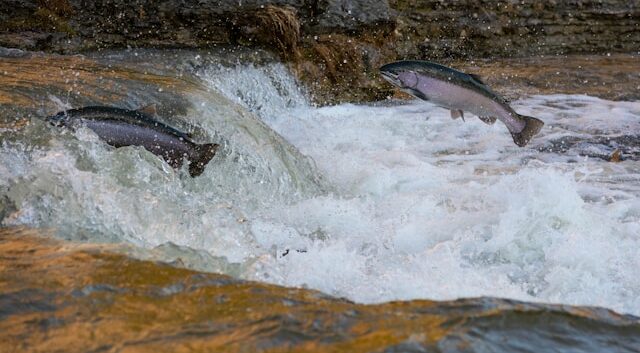A shocking new study reveals how the anxiety drug clobazam accelerates salmon migration—but at what cost?
A staggering new revelation about pharmaceutical pollution has surfaced, showing how the anxiety medication clobazam is drastically altering salmon migration, possibly putting the entire species at risk. This breakthrough research, published on April 10, 2025, reveals that juvenile salmon exposed to clobazam migrate faster, bypassing dangerous dams more easily. But the consequences of these changes could be catastrophic for their long-term survival.
Salmon, which have been migrating from freshwater to saltwater for millions of years, are now encountering an unprecedented threat: human-made pharmaceuticals in their environment. Clobazam, a drug used to treat anxiety, is one of the most common contaminants found in wastewater. This new study found that when juvenile salmon accumulate clobazam in their brains, they swim faster, reach the ocean more quickly, and even navigate dangerous dams more efficiently.
On the surface, this may seem like an advantage—after all, speeding up the migration process should improve their chances of survival, right? But researchers warn that the effects of clobazam on the salmon’s behaviour could lead to devastating consequences. While these drug-affected salmon may reach the sea more quickly, they also lose their natural fear responses, which could leave them vulnerable to predators in the ocean.
The research, which tracked over 700 juvenile salmon on their journey through Sweden’s Dal River, uncovered a chilling truth. Fish that were exposed to clobazam migrated two to eight times faster than their untreated counterparts, swiftly overcoming dangerous rapids and dams. However, this newfound speed comes at a severe cost. In lab tests, salmon exposed to the drug exhibited significantly reduced shoaling behaviour—meaning they no longer stayed in tight groups to evade predators. Instead, they swam further apart, exposing themselves to an increased risk of being preyed upon.
“Salmon that swim faster might seem like they’re thriving,” said Dr. Marcus Michelangeli, one of the lead researchers, “but the reality is they could be setting themselves up for a deadly encounter with ocean predators.” The dangers faced by these drugged salmon are not just hypothetical. The transition from freshwater to saltwater is one of the most perilous stages of their life cycle, and the absence of fear could make them easy prey for predators.
Embed from Getty ImagesEven more disturbing is that clobazam isn’t the only pharmaceutical contaminant threatening wildlife. The study also found high levels of opioids like tramadol in the river, compounds that are commonly found together in wastewater. These drugs are known to alter animal behaviour, and the combined effect on salmon migration could have ripple effects throughout the ecosystem.
Researchers caution that these findings could have dire consequences for the future of salmon populations. While more drug-exposed salmon may reach the sea, they may never make it back to spawn, reducing their chances of survival in the long run. And with pharmaceutical pollution becoming more pervasive in rivers worldwide, the implications for other species are equally troubling.
“The bottom line is we need to be cautious,” Michelangeli warned. “When we unintentionally alter the behaviour of wildlife through pharmaceutical pollution, we risk changing entire populations in ways we don’t fully understand.”
As alarming as the findings are, they serve as a crucial reminder of the widespread impact pharmaceutical pollution is having on the natural world. More research is needed to understand how these changes in behaviour might affect salmon reproduction, health, and ultimately the stability of aquatic ecosystems worldwide.
